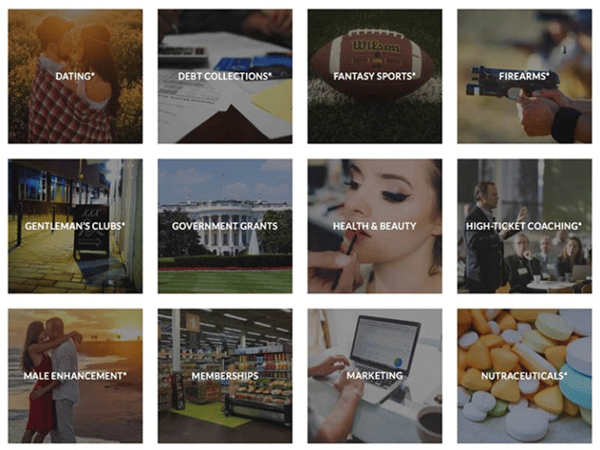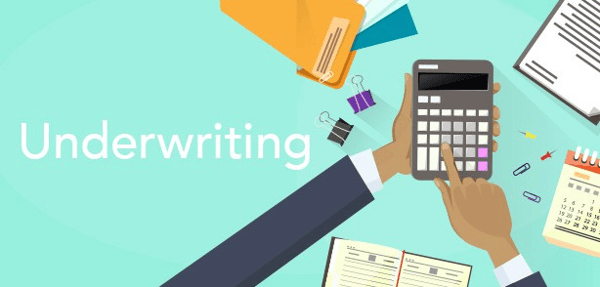Payment Survival Handbook: Your 101 Guide to Handling High Risk Payments
With the evolution of the finance industry, which has now moved to cashless payments and virtual currency, handling the flow of money has become extremely tricky for businesses. There are multiple levels of classification, verification & compliance that every business has to deal with. And these characteristics in turn determine the nature of a business as either high risk or low risk.
On the other hand, payment processors or banks are determined to secure their own interest and financial safety, by giving businesses a very strict set of boundaries to operate in – which is to say, by classifying businesses as low risk or high risk, processors are protecting their own investment and the interest of their clients.
High risk payments are often like a noose around businesses primarily because the classification often makes it especially difficult for businesses to find processors. And when they do find a willing processor, the qualifying stipulations maybe just too much to handle. This leads to difficulty in setting up accounts and also in getting services as profound as regular account holders for businesses that are labeled as high risk.

Are you a high risk business?
Let's get one thing straight - every business is risky! The definition of high risk is highly subjective and varies from processor to processor.
Virtually every business that involves extensive transactions or cash flows is deemed high risk. For example, casinos, drug paraphernalia shops, credit and debt repair, and stock trading are just some businesses that are labeled as high risk, due to the sheer volume of their transactions. Real estate and financial services such as financial planning and investment are less conspicuous businesses but considered high risk nonetheless.
While there are no parameters, and guidelines fluctuate from provider to provider, here are some boxes which if checked mean that your business is high risk.
- A new business with no market experience with an inexperienced or less experienced team.
- High risk industrial segments, for example, firearms and volatile chemicals.
- A high rate of failure industry with high earning as well as loss rations. For example, many restaurants, where opening profits may be high, but the sustainability predictions are unpredictable.
- Public image issues, for example industries in gaming or breweries or even adult entertainment.
- Niche industries where product or service may be unique, but the demand or consumer response cannot be predicted or determined.
- Pre-payment business models where your business requires large investments before people even know if it pays off. For example a car company.
- Historically known high transaction volume, especially in case of telemarketing or travel industries, where transaction volumes are high which increases fraud risk and chargeback risk.
The list goes on, but it is pretty much clear that it’s very easy to be a high risk business these days. And being in this bracket means it can be difficult for businesses to find a reputable, secure, and fair high risk merchant. Even if they’re able to find one, they’ll be charged higher rates and other undesirable terms.
So, what can you do if you’re a high risk business?
Does being high risk mean that your business will not earn, or that you will be burdened by piling payments?
Absolutely not!
Being a high-risk business means you need to run a tight ship. You need to keep a close eye on your turnovers, reserves, and chargebacks. In other words, you need to be prepared for the worst! The bright side to this is that you can actually maintain a strong business stability despite the high risk nature of your business, which will eventually allow you to gain more investors and merchants at the prevailing fair value that other "low risk" businesses enjoy. Here are some important things to consider:
A) Get The Right Underwriting
To begin with, it is essential to underwrite your business in the right manner. Acquiring banks assume risk on behalf of businesses, which they mitigate by screening out high risk business categories and practices. Underwriters look for financially-sound businesses that meet ethical business guidelines, which may vary from company to company.
Underwriters look for a long and strong credit history so that when for example, a transaction is charged back, the issuing providers are responsible for the funds. On the other side, payment processors that support illegitimate businesses will face harsh penalties, fines, and even business closure.
The thorough nature of the underwriting process can be confusing for a first-time applicant especially when it comes to understanding payments industry terminology, and qualifying criteria. That’s why it is essential to work with an experienced processing partner so that you feel confident navigating the underwriting process.
Here are some things you need to have in place before choosing your underwriting partner:
● What’s your industry type
The level of risk depends on business types. For example, a business that accepts and charges on cards is less risky than an ecommerce company! Knowing your business type will accurately put you in a bracket rather than that choice being made for you by the underwriter.
● Policies
What is your year of inception? What are your policies particularly related to payments, and refunds? How do you operate? These questions will certainly help assess the risk and having ironclad documentation will really go a long way.
● Data Security
There’s a criteria called Data Security Standard (DSS) which is a set of rules developed by the card brands to protect data and establish best practices in credit card processing. And following these guidelines is a must should you even want to approach an underwriting partner.
● Financial Stability Analysis
Your bank statements, your financials, and usually, your own credit - these are vital for high risk businesses, as this is information that can make or break the merchant underwriting approval.
● Supporting Documents that Establish Credibility
The issuing bank may request additional documentation to establish the legitimacy of your business further. The types of records requested may vary from one business to another, but typically include yet may not be limited to:
○ Canceled checks
○ Appropriate business licenses
○ Business plans
○ Detailed inventory reports
○ Financial forecasts and business projections
Furthermore, high risk businesses may be required to provide an upfront cash reserve or a rolling reserve that holds back a percentage of processing revenue for an interim period until you establish a stable transaction history. In some cases, until the business transaction history proves the stability and trustworthiness of the funds processed, banks may make a withdrawal of fees daily, instead of the industry-standard monthly withdrawal.
In other words, getting your underwriting right boils down to 7 essentials:
- Keep proper documentation for presenting a viable business type. Here are a few to begin with
-
- Company’s year of incorporation
- Policies and SOPs
- Mission and Vision statements
- HR and other staffing documentations
- Payroll documents
- Provide proof of good standing history
- Show a low chargeback history
- Keep sufficient fund-volume history
- Show a clear business experience
- Keep customer security as paramount
- Draft credible and clear business policies and products and goods offered

B) Understanding the Concept of Business Reserves
When the term high risk gets associated with your business, you need to expect setting up considerable reserves to satisfy your processors. A business account reserve creates a cash reserve that the banks or the payment processors can use to cover the cost of chargebacks or refunds. These reserves protect the payment processors from risk by putting the burden onto the business and at the same time securing their (processors’) own interest.
Here’s an example to better understand the situation: You just sold a product to a customer for which they paid via a credit card. In this scenario, your payment processor issues your business a credit from the accepted transaction, and you get the money.
Now while the amount typically gets deposited within a few business days, your customer in the meantime may dispute the transaction and ask for a chargeback or a refund as it is commonly called. The issuing bank conducts an investigation, but more often than not, the decision is in the favor of the customer and the amount is refunded.
But between the time when the refund claim was made, and the actual refund was processed, the funds may no longer be available with you, because you have a business to run, and naturally, you cannot expect a claim for refund on every transaction and just sit on the money. This in turn puts your payment processor in a difficult position, because they now have to return the money on your behalf. And it is to bail the processors out of such difficult situations that the concept of ‘reserve’ has emerged.
Commonly, just because a business is termed as high risk, the percentage of creating such reserves also run significantly high, depending of course on how risky your business is.
Effect of Reserves on your business
If your business has been labeled as high risk by a processor, you will most certainly need a reserve. And reserves can significantly increase your payment processing costs. It may also be the case that the reserve may be on top of the processing fee you are already paying on top of every transaction. This restricts you financially but maybe a prerequisite, especially for new or inexperienced businesses.
Payment processors commonly use the following reserve types for their high risk customers.
Rolling Reserves
This is the most common type of reserve wherein a percentage of the reserve is held back from each transaction for a period of 6-12 months. This ensures that chargebacks if any are properly addressed. These reserves are released back to the businesses on a rolling basis once the allotted time passes and hence the name. The amount that can be held in this reserve is not predetermined, and hence the scale depends on your business in other words, the higher your sales, the higher your reserve amount will be.
Capped Reserves
Capped reserves offer a more straightforward approach and work by withholding a percentage of each transaction. And when a predetermined account reserve amount is reached, no additional funds are withheld unless the reserve is depleted by chargebacks. The cap of the amount that needs to be withheld, as always depends on your business. However, reserve funds are held by the processor as long as your business account remains active. A capped reserve system is also often accompanied by monthly processing restrictions.
Up-Front Reserves
If you are a new merchant, then be ready to cough up a hefty reserve up-front. This is done for new businesses with limited credit or erratic earnings history. The calculation is based on the business’s expected monthly volume and must be paid at the beginning of the processing agreement. Depending on the nature of your business this type of account usually means a significant burden on your business, which makes it very difficult to manage cash flows.
C) Understanding and Navigating Chargebacks and Fraud Risks
What is a chargeback?
In simple words, a chargeback is the reversal of a transaction by the issuing bank owing to several reasons. And since these chargebacks do not happen instantaneously, the payment processors usually have businesses that are high risk, set up reserves to deal with the payment costs.
In fact, a business’ risk status is estimated based on how high the chargeback rate will be.
Generally speaking, the standard chargeback threshold is 1% of your total transactions in a period. With that said, chargebacks are not the end of the world for your business. They are actually very common. However, you just need to be very careful about how you handle them. If for example, a customer approaches you for a refund directly, instead of going to the processor, try to handle the matter internally. This way, you can cut back on those hefty fees, and not give your processor an excuse to increase your reserve or free rate.
Understanding Chargeback Fraud
It must be assumed that wherever there is an option of getting money back, there is also that looming possibility of fraud. There are quite a few reasons why an issuing bank might initiate a chargeback like:
- No authorization by the cardholder
- Goods/services returned or refused
- Goods/services canceled
- Goods/services not received
- Goods/services not as described
- Goods/services damaged or defective
Naturally, these reasons can be abused, and in fact, they are!
In a study done by the Federal Reserve Bank of Kansas City and published in January 2016 as a working paper titled Chargebacks: Another Payment Card Acceptance Cost for Merchants, some statistical insights to chargebacks include:
- The total chargeback rate compared to the total transaction volume is 0.016%.
- The most common reason for initiating chargeback claims is a fraud (i.e. transactions reported as being unauthorized by cardholders).
- The study also included chargeback numbers for “non-receipt of goods or services,” and “product quality-related reasons,” both of which can also indicate friendly fraud.
- Total chargeback rate and fraud chargeback rate are significantly higher for card-not-present transactions than for card-present transactions.
- Fraud related charges overwhelmingly resulted in a merchant loss.
- Merchants were only able to successfully dispute 20%-30% of the chargeback claims.
- Merchant losses are substantially smaller than other credit card processing fees but the study is not granular enough to calculate total loss, which includes the merchant’s loss of merchandise, labor, capital, and other time-related costs associated with fighting a chargeback dispute.
Handling Chargeback Fraud
Assuming that you are being victimized by chargeback fraud the first thing you can do to prevent is keep good records. This way, you have an evidentiary proof for your processor in case of disputes. Records of purchases, shipping/tracking information and evidence of delivery, etc. go a long way in eliminating doubts and maintaining your reputation. Having these records will also eventually help you improve your standing and may cut back on some costs of being a high-risk business!
Only 20-30% of businesses win a chargeback dispute. But does that mean you give up? Absolutely not, dealing with fraud is a painstaking process, and while issuing banks may side with their customers, your paperwork can put you into that 20-30% winning bracket very easily. Especially because most claims are based on non-fulfillment, which can be easily solved with the paper trail.
Final Words for High Risk Businesses
It’s tough! We know.
Especially after the pandemic, the going has become even tougher! But as long as you have the right business mindset, and are ready to maintain a vigilant eye, no matter if your business is dubbed high risk, you should be able to manage it despite the extra hurdles that may come your way.
Just understand one thing, once you have a system sorted out, everything else is clockwork. There are several specialists out there who can help you get set up, so make use of them, but above all, be sure to keep a watchful eye on your business.
Click here to get in touch with us today if your business is high risk and you need to manage fraud and chargebacks.
 Chelsie Cooper
Chelsie Cooper
